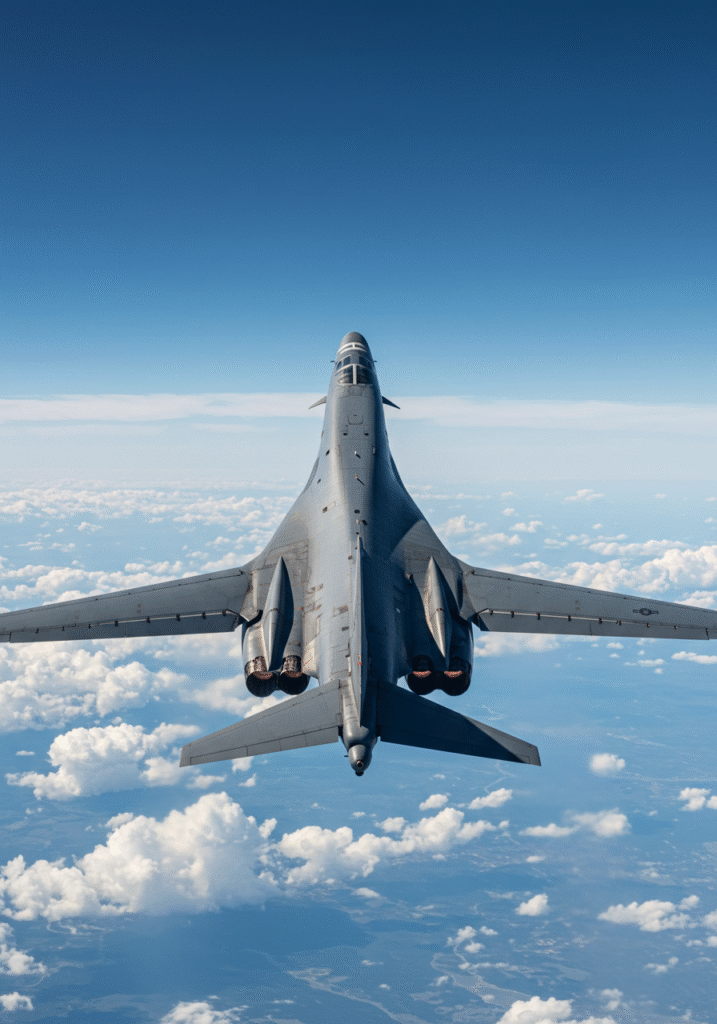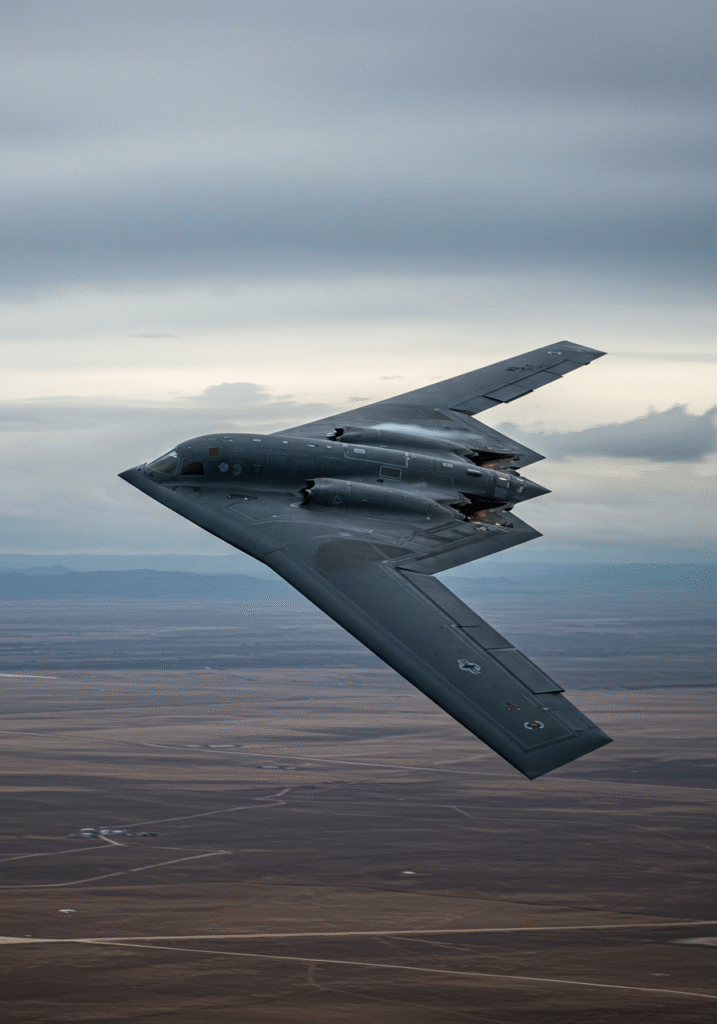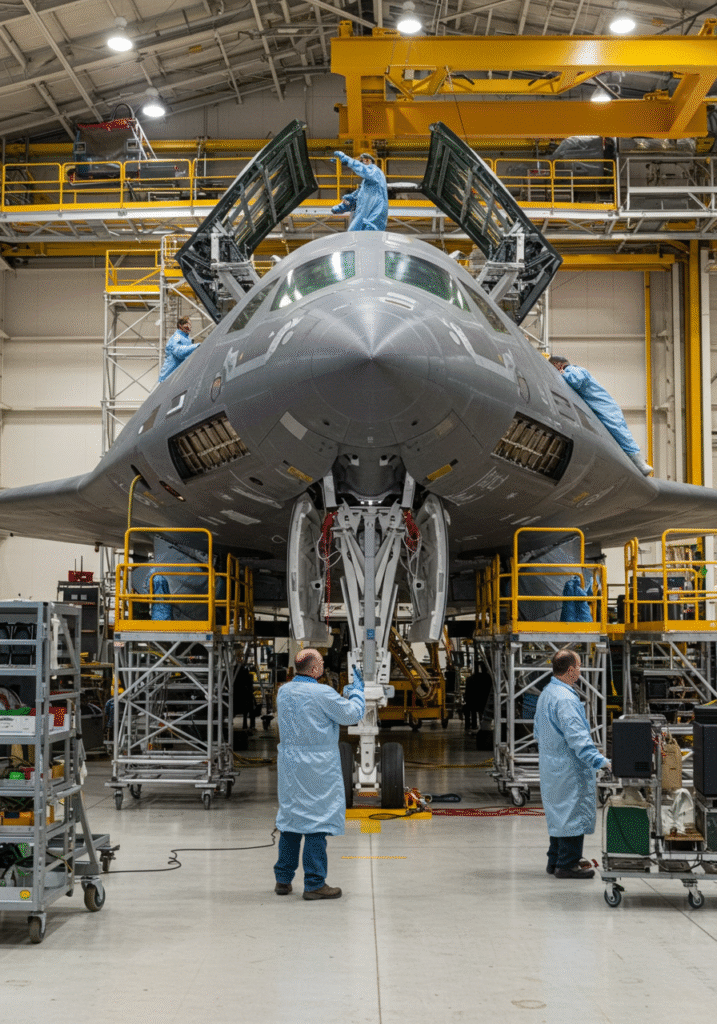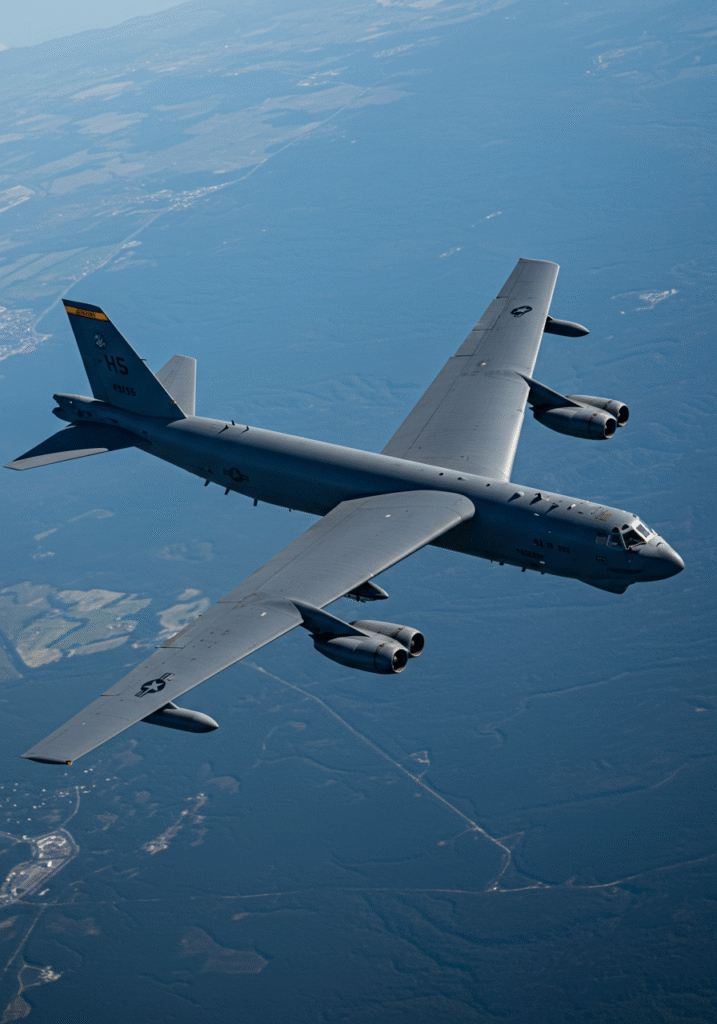Explore the transformative advancements in the U.S. Air Force bomber fleet as we approach mid-2025. Discover the future of aerial warfare and technology.
The United States Air Force’s strategic bomber fleet stands at a pivotal juncture in mid-2025. As global geopolitical landscapes continue to shift and evolve, the importance of long-range strike capabilities, both conventional and nuclear, has never been more pronounced. The USAF is currently navigating a complex period of modernization, balancing the sustained relevance of its venerable legacy platforms with the ambitious integration of next-generation technology. This blog post delves into the current status, ongoing transformations, and future trajectory of the U.S. Air Force’s bomber assets as of June 2025.
B-1B Lancer bomber

Here’s a detailed description:
- Aircraft: It’s clearly a B-1B Lancer, identifiable by its distinctive variable-sweep wings (which appear to be swept back in this image), four engines, and long, slender fuselage.
- Perspective: The photo is taken from a trailing aircraft or another airborne platform, looking forward at the rear of the bomber. This angle emphasizes the powerful exhaust nozzles of its four engines.
- Wings: The variable-sweep wings are extended, but not fully forward, indicating a cruising or mid-speed configuration. The wingtips feature the characteristic angle.
- Color/Scheme: The aircraft is a dull, non-reflective gray, typical of military stealth or low-observability coatings.
- Sky and Clouds: The bomber is flying high above a layer of fluffy, white cumulus clouds, with a clear, deep blue sky visible above the clouds and extending to the top of the frame. This suggests a high-altitude flight in good weather.
- Lighting: The aircraft is well-lit, likely by direct sunlight from above, creating subtle shadows that define its contours.
- Overall Impression: The image conveys a sense of power, speed, and vastness, with the aircraft appearing as a solitary, formidable presence against the expansive sky and cloudscape.
B-2 Spirit bomber

Here’s a detailed description:
- Aircraft: The central subject is a B-2 Spirit bomber, immediately recognizable by its distinctive flying wing design, which lacks a conventional tail or fuselage. Its dark, radar-absorbing paint scheme contributes to its stealth capabilities.
- Angle/Pose: The aircraft is angled slightly downwards and to the left, banking gently. This angle allows for a good view of its upper surface and the integration of its engines within the wing structure. The four engine exhaust nozzles are visible at the trailing edge of the wing.
- Environment:
- Sky: The sky is overcast and cloudy, creating a dramatic, somewhat moody backdrop for the dark aircraft. The clouds appear dense and diffused.
- Ground: Below the bomber, a vast, arid, and somewhat desolate landscape stretches out, likely a desert or barren terrain. There are faint traces of roads or structures, suggesting a remote area. The ground appears brownish-gray.
- Lighting: Despite the overcast sky, there’s enough diffused light to illuminate the aircraft and reveal its contours and the subtle textures of its surface.
- Overall Impression: The image evokes a sense of power, stealth, and mystery, with the futuristic-looking bomber gliding silently over a vast, empty landscape under a dramatic sky.
B-21 Raider bomber (under development)

Here’s a detailed description:
- Aircraft: A B-2 Spirit bomber is the central focus, viewed head-on. Its distinctive flying wing design is prominent. The aircraft is partially disassembled or undergoing extensive work, as evidenced by:
- The nose landing gear bay is wide open, exposing complex machinery, wiring, and structural components.
- Panels on the top of the aircraft, near the cockpit, are open, revealing internal compartments.
- Some panels on the leading edges of the wings near the center are also open.
- Personnel: Several individuals, likely technicians or engineers, are actively working on or around the aircraft. They are wearing light blue coveralls or lab coats, suggesting a cleanroom or controlled environment.
- One person is visible on top of the aircraft, near the open panels.
- Another is on a platform to the left, working on the wing.
- Two individuals are on platforms to the right, also working on the wing.
- Two individuals are in the foreground, facing away from the camera, seemingly overseeing or preparing for work.
- Equipment and Environment:
- The aircraft is surrounded by various pieces of ground support equipment, including tall, multi-level scaffolding and work platforms, allowing access to different parts of the large aircraft.
- Yellow scaffolding frames are prominent.
- Various tools, carts, and equipment racks are visible in the foreground and around the aircraft, indicating an active maintenance or production environment.
- The hangar itself is well-lit with overhead industrial lighting, and its structure, including yellow beams and white walls, is visible in the background.
- The floor is a light-colored concrete.
B-52H Stratofortress bomber

Here’s a detailed description:
- Aircraft: The central subject is a B-52 Stratofortress, immediately recognizable by its massive size, swept wings, and eight jet engines mounted in pods (two engines per pod, four pods in total) under the wings. Its overall color is a dull gray.
- Markings:
- On the tail fin, the letters “HS” are visible, likely indicating its home base or unit.
- Below “HS” there appear to be some numbers, possibly “010”.
- A U.S. Air Force star and bar insignia is visible on the top surface of the left wing, and another on the fuselage near the tail.
- Flight Attitude: The aircraft appears to be in level flight or a slight turn, maintaining a steady course.
- Environment:
- Sky: The upper part of the image shows a clear, bright blue sky, suggesting good weather conditions at altitude.
- Ground: Below the aircraft, a vast expanse of land is visible, heavily forested with dark green trees. There are also lighter areas that might be clearings, fields, or even small towns, though no specific details are discernible due to the altitude. The ground appears slightly hazy in the distance.
- Lighting: The aircraft is well-lit, with sunlight highlighting its upper surfaces and creating subtle shadows that define its contours.

